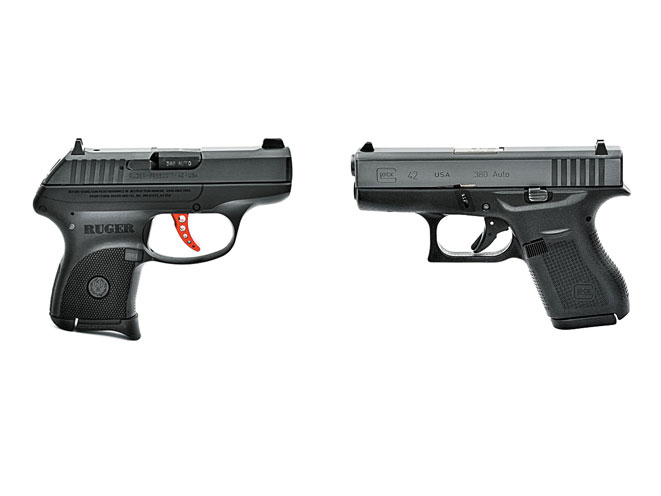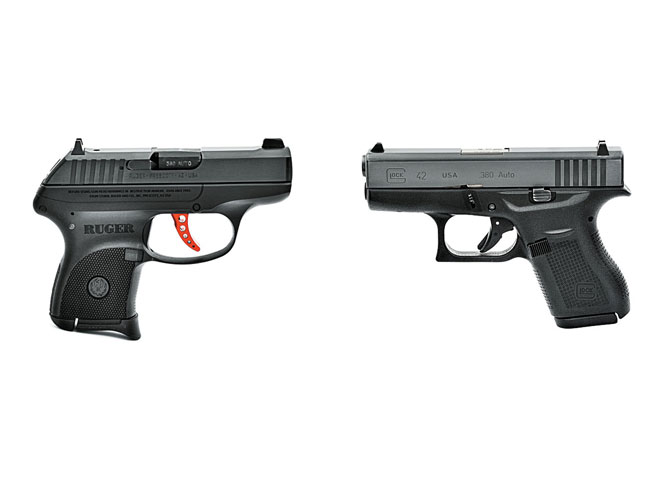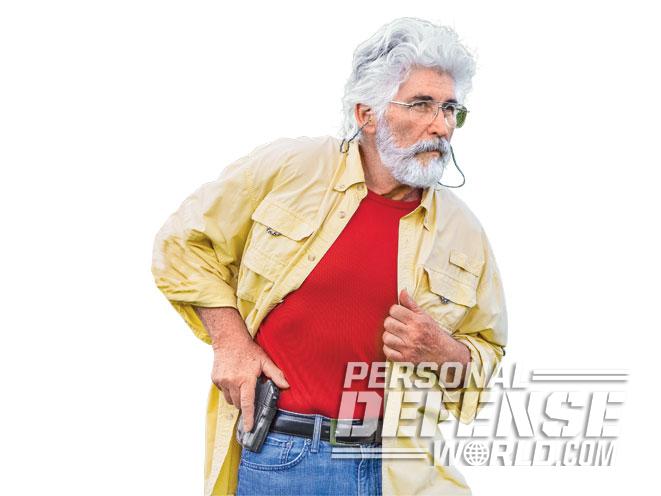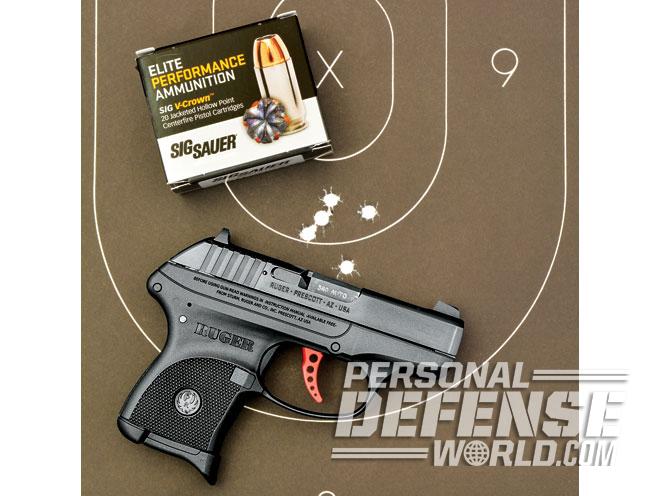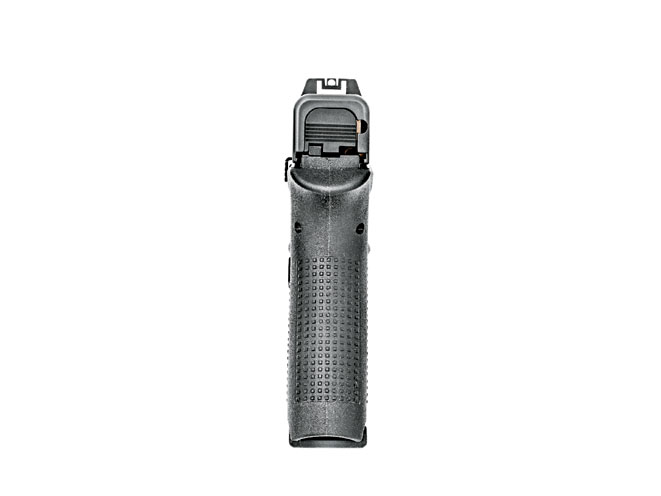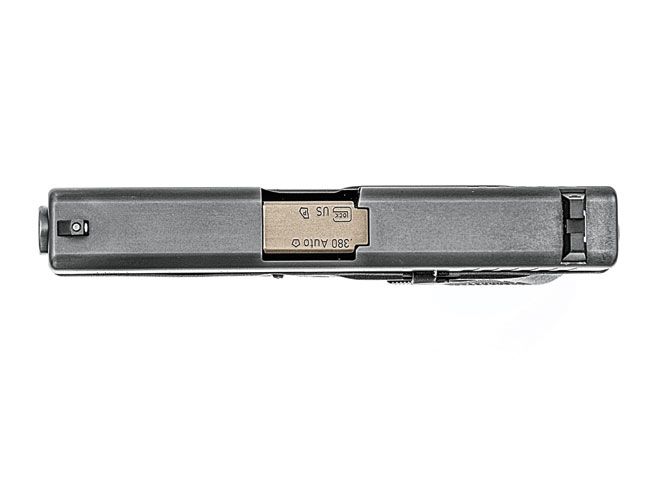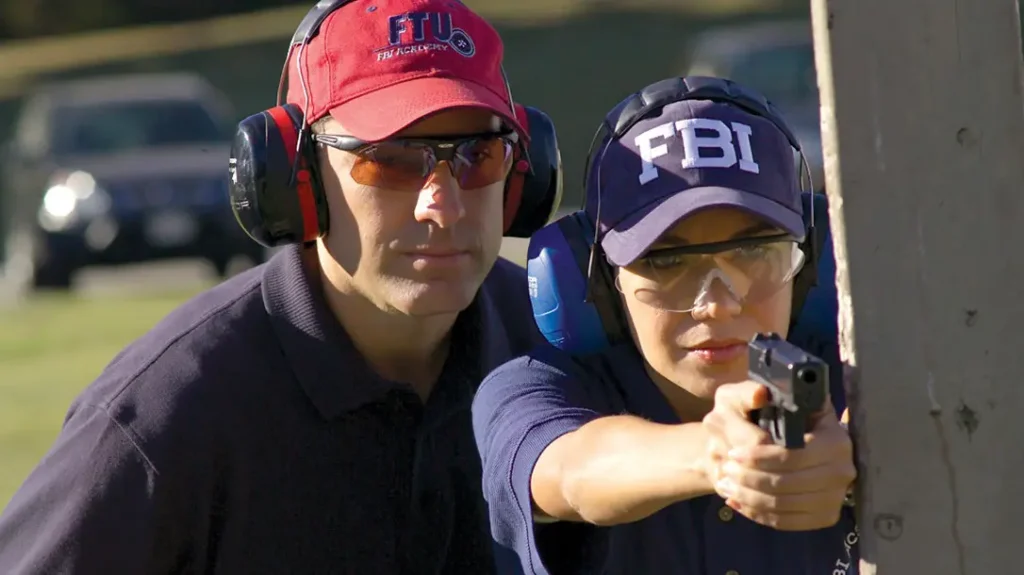Bettering one’s self is always a worthwhile endeavor. This practice has been standard operating procedure at Glock since the company’s first model in 1982. And while far from Glock’s original factory in Austria (or even the new one in Smyrna, Georgia), Sturm, Ruger & Co., established in Connecticut more than 65 years ago by William B. Ruger, Sr., has followed this same philosophy.
It is no surprise then that these two legendary arms-makers face off in “Tale of the Tape” with two of the best subcompact semi-autos chambered in .380 ACP in the world.
Ruger LCP Custom
Advertisement — Continue Reading Below
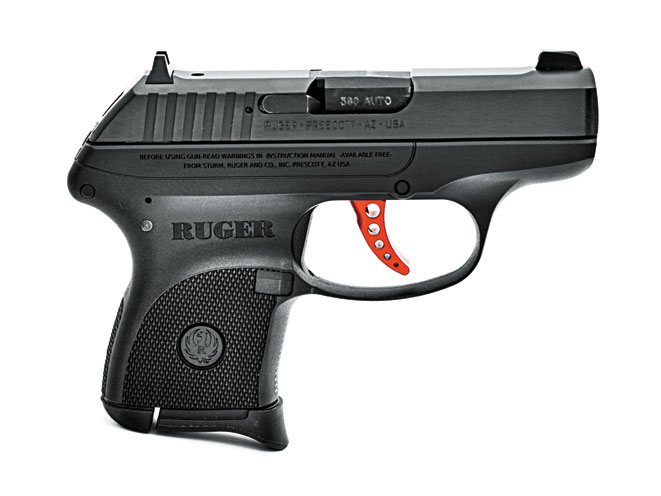
Introduced in 2008, the original LCP was an immediate success as a concealed-carry handgun in the venerable .380 ACP caliber. The hammer-fired, locked-breech, recoil-operated semi-auto pistol uses an internal hammer visible through a cutout in the back of the slide. If you can’t see the hammer, the LCP hasn’t been cycled and the trigger has zero resistance. There’s also a loaded-chamber view port at the breech, but no visible hammer means that the LCP won’t fire.
With a lightweight glass-filled nylon frame, alloy steel slide, double-action-only (DAO) trigger and no-frills design, it is not an overly demanding handgun. The LCP’s trigger pull is heavy (6.5-pound average) and the sights are small on the blued slide.
RELATED STORY: 6 Ruger Pocket Pistols & Revolvers For Self Defense
Advertisement — Continue Reading Below
The only options (from Ruger) were the addition of a Crimson Trace Laserguard and a few specialty versions with custom finishes—until now. Enter the LCP Custom, the same gun with nearly all the upgrades available on the aftermarket, including a stainless steel guide rod, a red, skeletonized trigger and something that no one but Ruger could have given the LCP, new sights.
The shape and angle of the skeletonized trigger is designed to reduce perceived trigger-pull weight. The new front sight is a fixed blade with glare-reducing horizontal serrations and a bright luminescent center dot. At the rear is a windage-adjustable square notch sight that quickly centers the front blade, making this a much faster gun to get on target. With all of its new features, the LCP Custom is a significant upgrade, and all for a mere $30 more than the standard model! (http://www.ruger.com)
Glock 42
Advertisement — Continue Reading Below
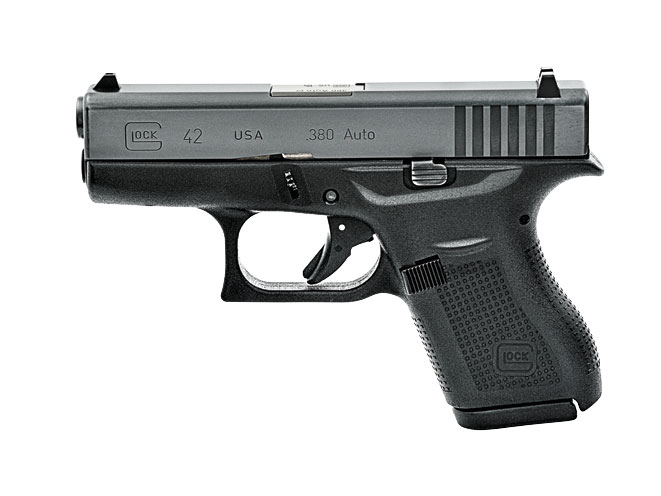
In the world of .380 pistols, there is no other gun like the Glock 42. Over the past 33 years, Glock has become an innovative leader in every size and caliber of semi-automatic handgun. And even the Glock 42 in .380 ACP shares the same fundamental designs as the original Glock 17 in 9mm. Why this continuity of design remains important to the Glock philosophy is that every model—regardless of caliber or frame size, from standard to compact and subcompact—is built to handle, operate and be field-stripped in the exact same way. Familiarization with one Glock is familiarization with every Glock.
The Glock 42 has the company’s smallest frame, slide and barrel length with a 3.25-inch, hammer-forged barrel, an overall length of 5.94 inches, a height of 4.13 inches, a pocket-friendly width of just 0.94 inches and a weight of 13.76 ounces unloaded. The polymer-framed Glock 42 has every desirable feature needed for a .380 ACP pocket pistol, including dovetailed white-dot sights, a dual recoil spring to reduce muzzle lift as well as easily operated slide and magazine releases. The Glock 42 uses Glock’s proven Safe Action system, consisting of trigger, firing pin and drop safeties that disengage when the trigger is pulled and automatically reengage when the trigger is released.
RELATED STORY: Perfect Nines – 9 Reliable GLOCK Pistols Chambered in 9mm
Advertisement — Continue Reading Below
Giving it further parity with the LCP, the Glock 42 fires with the barrel and slide locked together, instead of using the traditional unlocked blowback design, and it has the same standard 6+1 capacity. Trigger pull includes a 0.5-inch length of travel, with a quick reset and zero overtravel, and an average pull weight of 6.5 pounds. (http://us.glock.com; 770-432-1202)
The Glock 42 is discreetly larger than the LCP by the nature of its squared-off design, but we are talking fractions of an inch. In terms of handling, both guns are nearly equal, with the advantage going to the Glock 42 for its better sights and a slide that locks back after the last round is fired. Gun for gun, both offer comparable features, with the size and price advantages going to the LCP.
